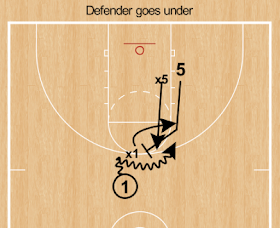Screening has many advantages - obtaining separation, generating mismatches, hard to defend, multiple options for both players involved. The principal downsides are poor technique (leaving gaps, challenging reads for young players, offensive fouls) and compromising spacing.
With many iterations of decisions, we shouldn't confuse players. Splitting defenders, setting up corner 3s, rescreening, etc. belong to another discussion as does defending screens.
What essences can we embrace?
1. Sprint to the screen (whether directly or angled, your choice).
2. Protect yourself when screening. Have knees bent to absorb the contact.
3. Better to be late than early coming off screens. "Wait, wait, wait." - Don Meyer
4. Set up your cut.
5. Know SOME READ options, you don't need to know them all to start (videos above).
6. More commonly, ball side screen the ball, help side screen your buddy. Away from the ball, "the screener is the second cutter."
7. Ballhandler first PERSONAL option - think drive for layup, second is shot if defender goes under.
When the defender goes under, she "invites" you to shoot. That's always discretionary for younger players without range (or accuracy). It's good defense for non-shooters, too.
8. Screener options - EARLIEST is slipping the screen if the screener defender cheats past you looking to hard show (fake trap) or trap (blitz). Commonest is roll (open to the ball to the basket, presenting a target.) Occasional is pop (looking for perimeter shot).
9. Key point: Screening isn't "grunt work." Screening is opportunity to get open to score.
10.Tight defense favors back screens. Looser coverage favors down screens.

